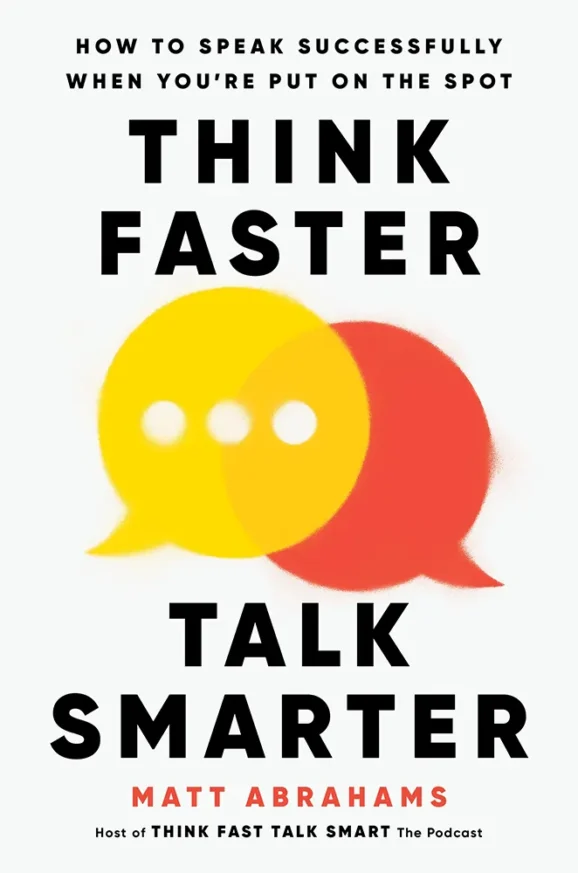Deliver with aplomb

John E. Kaye
- Published
- Executive Leadership, Home

The very best make light work of big talks and keynote speeches by letting their preparation do the heavy lifting – coach and author Matt Abrahams explains how
In the realm of public speaking, the difference between an average presentation and an outstanding one often lies in the preparation. Having coached and observed numerous speakers – from TED, to the World Economic Forum and Nobel Prize acceptance speeches – I’ve distilled key techniques that set apart the world’s most impressive speakers as they prepare for their big talks.
What follows is an outline of the methods and means of approach used by some of the very best as they gear up for major occasions – strategies to calm the nerves, while sharpening the focus. I hope you find something useful here to draw upon the next time you have to address the room.
Start with a key question
One of the most fundamental steps in preparing for a talk is asking: “What does my audience need to hear from me?” This simple yet profound question shifts the focus from the speaker’s performance to serving the audience’s needs. It’s about tailoring your message to the audience, reminding you that they are the primary focus of your presentation. This approach alleviates the pressure many speakers feel under the audience’s evaluative gaze.
Understand and connect with your audience
Understanding your audience’s perspective is critical for making your talk relevant and compelling. This involves empathising with their knowledge level, expectations, and attitudes. By tailoring your content
to meet their needs, especially when presenting complex data or statistics, you enhance its relevance and memorability. For instance, contextualising data in a manner that resonates with the audience’s existing knowledge base makes your message more impactful and easier to grasp. Analogies are a powerful tool in this regard, as they link new information to familiar concepts, facilitating quicker understanding and retention.

Craft a question-based outline
Ditching the rigid script for a question-based outline can transform your delivery. By framing your talk around key questions, you not only arm yourself with confidence, knowing the answers to these questions, but you also adopt a more conversational tone. This approach not only alleviates performance anxiety but also ensures that your delivery is engaging and memorable to your audience.
Incorporate an emotional hook
Emotionally charged messages are far more memorable than mere facts. Integrating an emotional hook into your presentation can significantly enhance its impact. This could be through storytelling that resonates with the audience’s experiences or by infusing passion and authenticity into your delivery. Remember, the emotional content of your message often finds a fast track to your audience’s long-term memory.
Thorough preparation and practice
There’s no substitute for thorough preparation and practice. This involves not just familiarising yourself with the content but also rehearsing the nuances of delivery. Practice helps in refining your message, timing, and the overall flow of the presentation. It’s about striking a balance between being well-prepared and maintaining a level of spontaneity that keeps the talk engaging and authentic.

Mastering the art of adaptability
Impressive speakers are also adaptable. They’re prepared to tweak their content and delivery based on the audience’s response and engagement levels during the presentation. This level of adaptability requires a deep understanding of your material, enabling you to pivot as needed without losing the thread of your message.
Using visuals judiciously
Effective speakers know that visuals are a tool, not a crutch. They use slides and other visual aids to enhance their message, not overshadow it. The key is to ensure that visuals are clear, relevant, and used sparingly to maintain the audience’s focus on the speaker and the core message.
Embracing feedback
Finally, embracing feedback, both during the preparation phase and after the presentation, is crucial. Feedback helps in identifying areas of improvement and fine-tuning your message and delivery style. It’s a tool for growth, allowing you to evolve and refine your skills continually.
The art of public speaking is not just about eloquence; it’s about connecting, engaging, and impacting your audience. By employing these secret techniques, you can prepare for your big talks in a way that not only boosts your confidence, but also ensures your message is received and remembered. The goal is to transform each speaking opportunity into an impactful and memorable experience for your audience.
About the Author

Matt Abrahams is a lecturer at Stanford’s Graduate School of Business, the author of ‘Think Faster, Talk Smarter: How to Speak Successfully When You’re Put on the Spot’ and ‘Speaking Up Without Freaking Out’. He is also the host of the podcast ‘Think Fast, Talk Smart’.
Sign up to The European Newsletter
RECENT ARTICLES
-
 Your roadmap to better management
Your roadmap to better management -
 Navigating the complexities of cross-cultural management
Navigating the complexities of cross-cultural management -
 Time to hire an A-team C-suite?
Time to hire an A-team C-suite? -
 Why strategic thinking is a team game
Why strategic thinking is a team game -
 Prioritising the golden thread
Prioritising the golden thread -
 The shadows we cast as leaders
The shadows we cast as leaders -
 Are referrals a risky business?
Are referrals a risky business? -
 Value your team as much as your customers
Value your team as much as your customers -
 Deliver with aplomb
Deliver with aplomb -
 Helping the business world’s squeezed middle
Helping the business world’s squeezed middle -
 Can stress boost organisational performance?
Can stress boost organisational performance? -
 A roadmap to marketing in times of turmoil
A roadmap to marketing in times of turmoil













